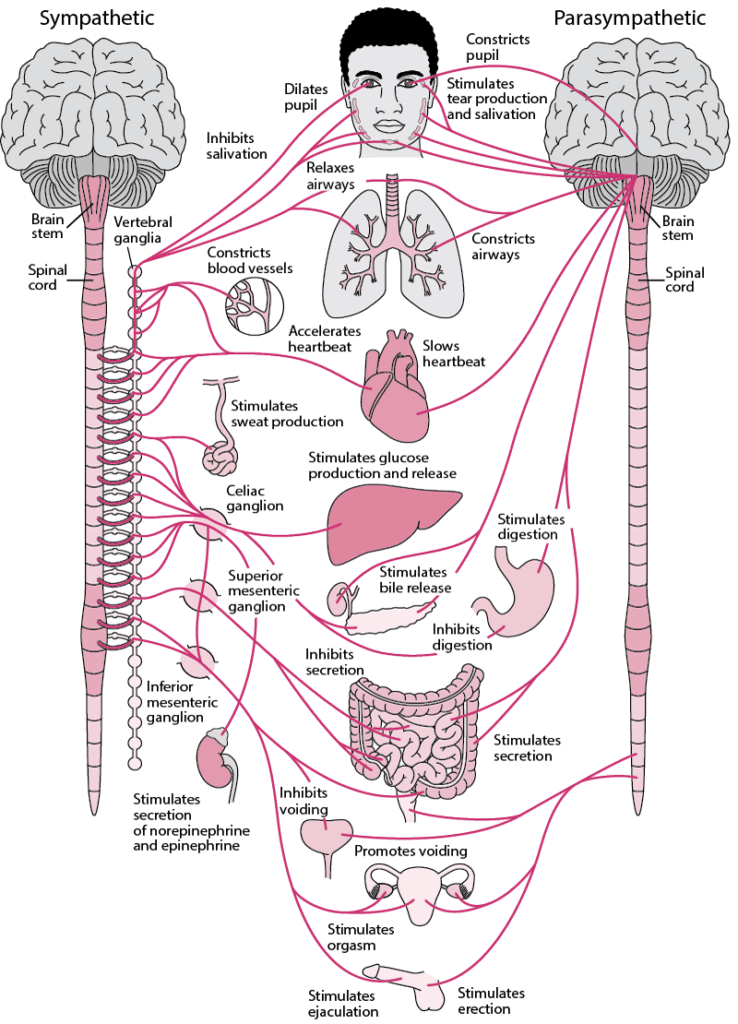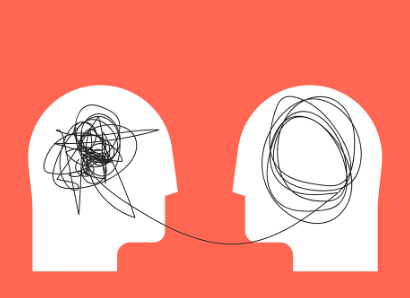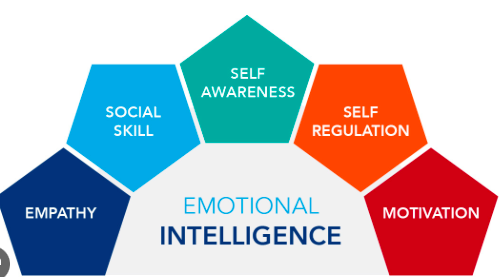The human brain is physically wired for emotion. While feeling emotion is a brain function, the hypothalamus plays a major role in mediation its manifestation. However, categorizing these preprogrammed feelings cognitively is another aspect of emotion.

Primary Emotions and Secondary Emotions

Emotions are classified as primary or secondary by theorists.
Primary Emotions might have developed as specialized responses that were necessary for human species to survive. They energize us, direct our attention, and lets other people know how we feel. The main emotions aren’t always universally agreed upon, however they typically consist of fear, anger, sadness, joy, and expectation.
Secondary Emotions are socially acquired and vary considerable among individuals. They changed as people discovered more advanced ways to understand, regulate, and control their emotions in order to foster adaptable relationships. The combinations of basic emotions can produce secondary emotions, and the higher frequency suggests that our visual processes which are primary unconscious, does play a crucial role in giving them labels. Envy, jealousy, worry, remorse, shame, relief, hope, depression, pride, love, thankfulness, and compassion are a few of these feelings.
According to Espeiadio-Antonio in 2017, our ability to process emotions is largely dependent on the autonomic nervous system. This system is made up of nerve pathways that enter the body’s internal organs across the spinal cord and the foundation of the brain. Its focus is on preserving the physical balance of the body. This system’s sympathetic division branches cause physiological alterations that contribute to our increased alertness and activity. Hormones released into the bloodstream by the endocrine glands maintain these alterations. The body experiences the opposite, or soothing, effects from neural pathways in the parasympathetic system. Together, the two systems keep the body at the proper amount of emotional stimulation.

Physiological Theories of Emotion
Psychologists have argued about the origins of emotion for over a century. The role of cognition is given varying weights in theories, which range from those that prioritize physiological to those that highlight the psychological or merely social background.

William James (1890), a psychologist, claimed in his theory of emotion that our bodies automatically react physically to every input. Emotion, then, comes after cognition, which comes after the body’s response to stimuli. According to the original premise, every physiological reaction results in a different emotion.
A few decades later in 1929, Cannon came up with a different idea. He argued that there is no connection between physiological arousal and emotional experiences. Our non-specific physiological reactions to stimuli just prepare us for a broad fight-or-flight reaction, which involves either confronting or avoiding the stimulus. Since any given physiological activity can result in a variety of emotional states or not even include any feelings at all, this response has nothing to do with the experience of emotion. Our sense of emotion is thus the result of a different process of perception. Our links with past attempts to make sense of the sensation of excitement give rise to emotion.

For many years, scientists had theories about the exact regions of the brain where emotional processing takes place. Numerous brain regions are clearly involved in this process, and much has been discovered about the structures involved. It is now commonly acknowledged that an individual’s cultural habits influence how the environment develops in our brains.
Three regions can be distinguished in the brain, as was discussed in Chapter 3. The forebrain, midbrain, and hindbrain are included in this. The eldest brain, the hindbrain, controls involuntary life activities and is connected to the brainstem and cerebellum. The midbrain is more evolved than the hindbrain and is situated around the brain stem. It represents the second stage of brain evolution. This involves the limbic system, which is the focal point of emotion-producing processes. Forebrain, the center of emotional memory, is more concerned with the external world. A person’s judgment, logic, and abstract cognition are also stored there.

An important component in the creation of emotional states is the limbic system’s amygdala.
In light of his studies on the neurological foundations of emotion, Richard Davidson believes that the prefrontal cortex and amygdala interactions are important. He believed in assertions that our individual brains govern our emotional types. He identified six distinct emotional style components.

- Resilience: How quickly we recover from negative responses
- Outlook: The duration of our positive emotions
- Context: The degree to which we modulate our emotional responses in a manner appropriate to the context
- Social Intuition: Our sensitivity to social cues (Including verbal and nonverbal expressions that reflects our ability to understand and empathize with other people’s emotional world.
- Self-awareness: The extent to which we are aware of emotional signals within our own bodies and minds (The more we are aware, the better we are to manage it)
- Attention: The extent to which we can focus our attention on one thing at a time rather than becoming easily distracted.
Psychological Theories of Emotion
Similar to physiology-based ideas, psychological theories from the social behavioral perspective consider an automatic, programmed response that is later understood as emotion, sometimes consciously at first but gradually (due to habit) unconsciously.
Psychoanalytic Theory
The Interpretation of Dreams, an important book by Freud that was first published in 1899, marked the beginning of psychoanalytic thought. By the early 1900s, Freud’s theories had gained popularity in the US and had a significant impact on the then-emerging field of social work. This influence persisted until the 1950s.
Though in different versions, psychoanalytic theory is still commonly used in social work today through the theories of relational theory, object relations, ego psychology, and self psychology, among others.
Ego Psychology
The field of ego psychology was founded in the 1930s and (Goldstein, 2009; Schamess & Shilkrit, 2016) offers a deeper examination of the roles that emotion and cognition play in social functioning. As a psychoanalytic theory adaption, it represented a backlash against Freud’s strong emphasis on drives and brought attention to the function of ego in fostering appropriate social behavior. The goal of ego psychology is to construct a comprehensive psychology of normal growth. Due to its emphasis on both the individual and the environment, it was a prominent social work practice theory for much of the 20th century. However, due of its lack of emphasis on the nature of relationships, it has partially gone out of popularity.
Attribution Theory: A Cognitive Perspective
Attribution theory was the earliest of the psychological theories of emotion to give importance to intellect as an emotional trigger (Schacter & Singer, 1962). According to the idea of attribution, our perception of emotion is based on awareness evaluations we make about physiological feelings in certain social circumstances.

Theory of Emotional Intelligence
A person with emotional intelligence is able to accurately and efficiently look at information about emotions and, as a result, manage emotions in the best possible way.

Understanding and controlling our own and other people’s emotions is a key component of emotional intelligence. It needs emotional sensitivity in a range of social contexts. An individual who feels furious yet understands that in a given circumstance, some ways to display anger will be calm, and consequently restrains their outbursts of rage, is “emotionally aware“. On the other hand, however, a person who possesses this same knowledge but acts violently while knowing it is “emotionally retarded“.
Social Theories of Emotion
According to social theories of emotion, perception occurs before emotion. Since these meanings are learned, they eventually become automatic, sometimes known as pre conscious or unconscious. Social theories highlight how emotion serves to maintain interpersonal standards that are shared by individuals, as well as societal harmony.

People are better able to understand our inner states and actions when we express these emotions. We frequently view emotions as passions, due to the social purposes that they serve. Passion allows us to act in unusual ways because we believe that we are not the same in some way and that we have no control over what we do at any one time.
Theories of Emotion in Social Work Practice
The theories mentioned above help social workers better understand the causes of emotional experiences and how negative emotional states might manifest and affect behavior, which makes them helpful in client assessment and intervention. By offering guidance, the social worker can assist the client in forming more positive emotional responses.

Comments
8 responses to “Theories of Emotion”
Hi Carmen, I wanted to say that you did an amazing job on your post and the charts you provided. While I appreciate your definition on emotional intelligence, I do feel it is important to recognize that emotional intelligence is not either there or not there type of thing, but rather I believe that it has levels and each individual has varying degrees of emotional intelligence. I appreciate and connected with how you brought up the importance of these various theories of emotion and the studies behind them when it comes to their use in the social work profession. Thank you very much for the hard work, time, and effort put into this post and I look forward to reading more of your blogs in the future.
Hi Lane! Thank you for your reply. I chose this section of the textbook because I wanted to learn more about what “Theories of Emotion” meant. But I did not expect this much material to be covered in this section. I was feeling a bit overwhelmed but I tried my best. Thank you for noticing!
Hi
Emotions are so heavy and if we don’t control it; we may find ourselves in crisis. Yes, cognition is the key to controlling the emotional drive that prevents us from doing bad things. It is complicated like the saying goes “Mind over matter”.
Hi Ana! I do believe that emotions can be heavy to manage. I learned from this section of the textbook that it takes time to develop emotional intelligence in our lives. It can get really complicated sometimes. Great sharing!
Hi Carmen, This blog is so nice looking!
I appreciated the overview of emotions and I learned a lot from this post. I think emotional intelligence is a tad difficult to determine yourself. I think a person has to be incredibly self aware in order to be able to truly know their own level of emotional intelligence, would you agree?
Thank you for teaching us about emotions!
Hello Carmen,
I love how you layed out this blog! It was easy to follow along. I do want to point out that emotional intelligence is something that needs to be worked on. You may be able to identify your emotions, but without work you may not be able to convey those emotions within the social dynamic. My oldest has autisim. Emotions confuse him. He sometimes does not understand why people react the way they do. He has been going to therapy to help identify emotions in others and himself. It brings up a good point within people (kids and adults). Emotional intelligence has to be worked on. If the adult was told as a child to push down their emotions and ignore it, they can become “emotionally retarded” in a way. They were never taught how to process their emotions safely. For those adults, they are like children learning emotions. It can be done.
Wow even reading the chapter, I still did not think of the primary and secondary emotions. I just thought it was just lumped together. But since reading your blog, I understand that emotions are way bigger than just what we feel.
You covered this chapter so well. Great Job! I really liked that you put in your blog about passion and the definition for that on an emotional level. Passion is so relevant right now with some of the actions people are taking. Take the super bowl with Travis Kelce. People are arguing his behavior of screaming and hit/bumping his coach. Even his coach said he had passion. True, just as you stated passion can make someone act in unusual ways and believe they had no control over it. But is it ok to justify that passion. Someone who has a passion for sports, music etc and practices daily, they have passion. They don’t treat what they love like someone who just likes it, they act in an unusual way. Someone who love another person so much that they don’t want them to be with anyone else and murders them? They also had passion. It is important as social workers to look at these emotions and help guide others to recognizing the emotion and, as you stated earlier, develop their emotional intelligence. I really liked this blog. I appreciate you being so thorough with the definitions and illustrations.